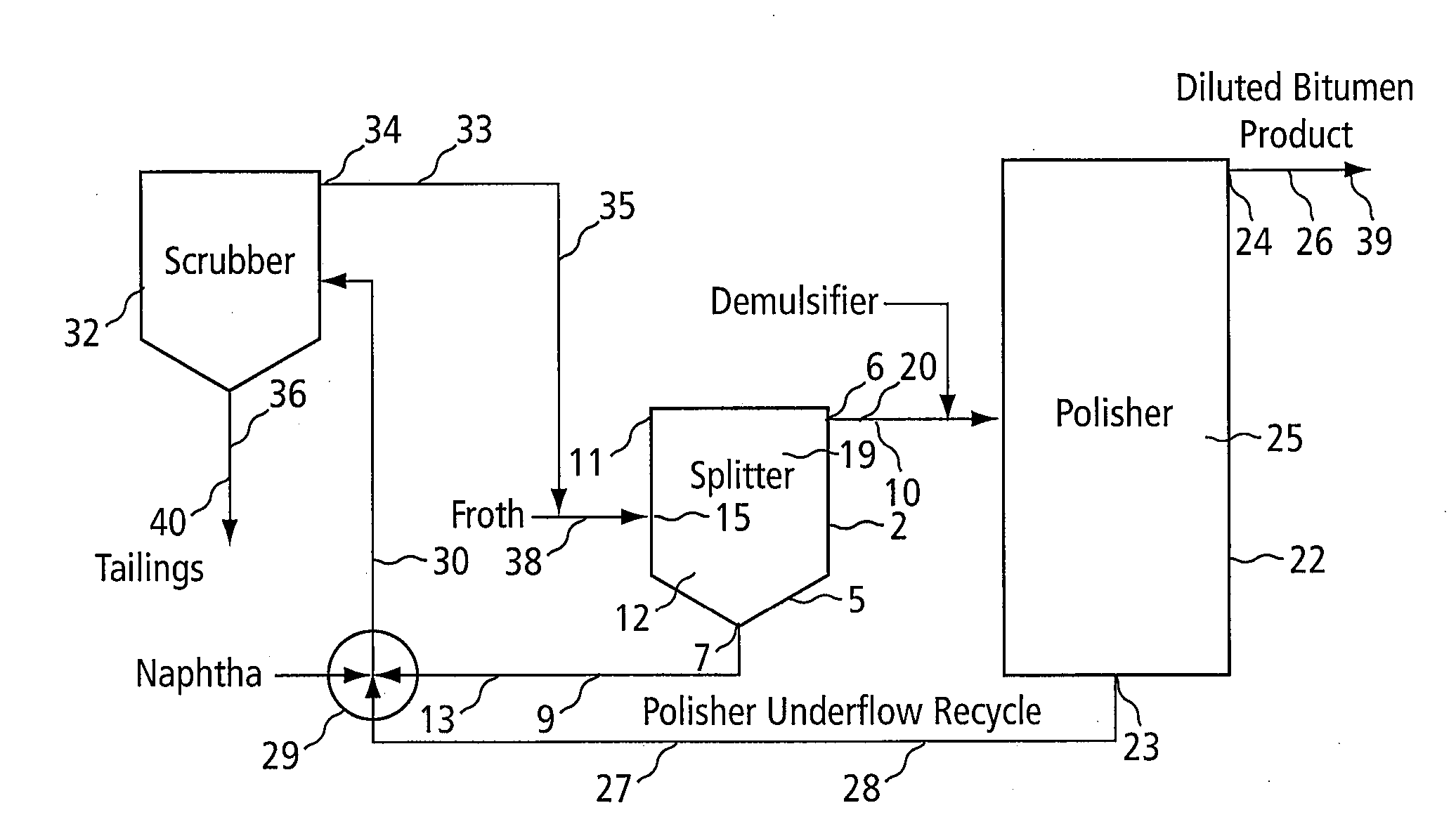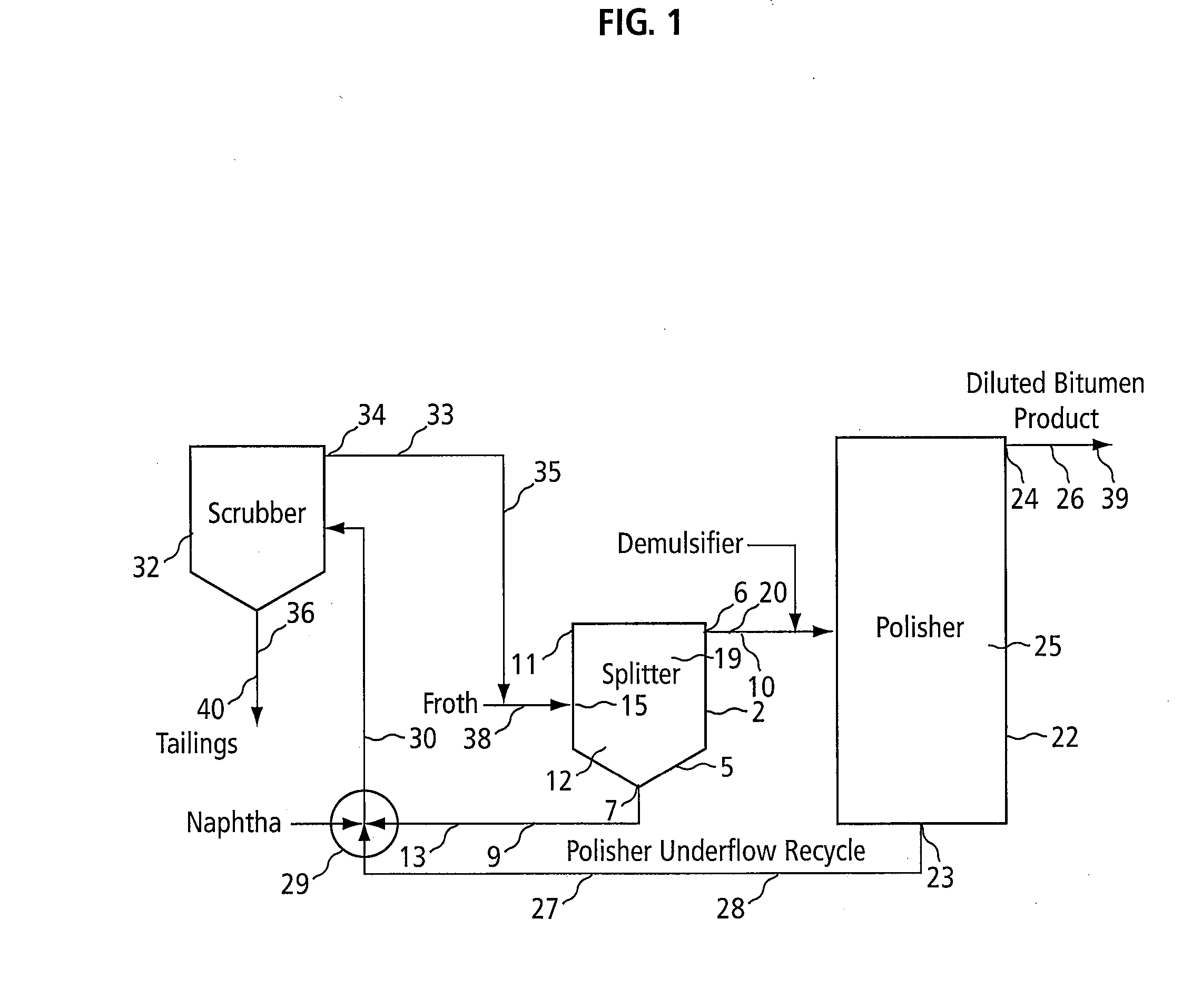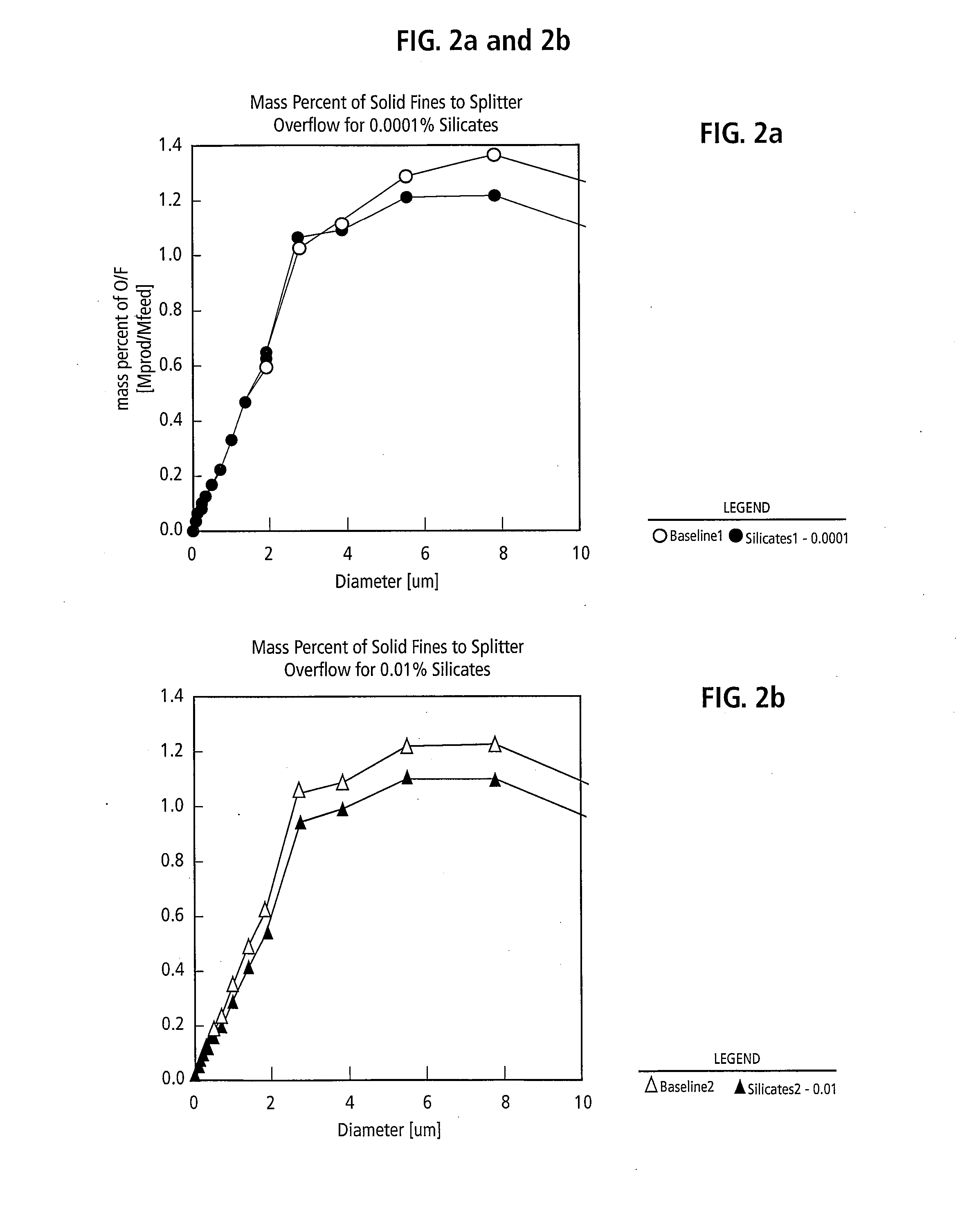Silicates addition in bitumen froth treatment
- Summary
- Abstract
- Description
- Claims
- Application Information
AI Technical Summary
Benefits of technology
Problems solved by technology
Method used
Image
Examples
example 1
[0038]A bench-scale pilot plant of a continuous naphtha-based froth treatment gravity setting operation with a configuration similar to that shown in FIG. 1 was used in the following example. Varying amounts of sodium silicate (0.0001, 0.01 and 0.1% sodium silicate, wt / wt based on bitumen froth) were added to bitumen froth diluted with naphtha. In this example, bitumen froth contained an average of about 60.1 wt % bitumen, about 28.4 wt % water and about 11.5 wt % solids. The naphtha to bitumen ratio was 0.6.
[0039]The treated dilfroth was then fed to a splitter vessel and the splitter overflow (raw dilbit) was analyzed as to the mass percent of fine solids that are present in the splitter overflow versus the diameter (μm) of the fines. FIGS. 2(a) to 2(c) show that the addition of sodium silicate resulted in less fine solids (e.g., solids having a diameter less than 10 μm) present in the raw dilbit when compared to no addition of sodium silicate. Further, the reduction in fine solids...
example 2
[0040]Bench-scale batch tests were also performed to see what effect the addition of sodium silicates would have on the stable rag layer that forms between the diluted bitumen layer and the water layer in the splitter vessel during gravity settling of the diluted bitumen froth. It is believed that the rag layer may be a result of stable water-in-oil emulsions persisting, primarily due to the clay solids present in the diluted bitumen froth. The rag layer is a mixture of partially oil-wet solids, oil and water-in-oil emulsions. Much of the clays solids are kaolinite and illite. The formation of such a rag layer prevents complete separation of the diluted bitumen from the water and solids.
[0041]In this example, bitumen froth containing water and fine solids including clays (approximately 60% bitumen, 30% water and 10% fine solids) was first diluted with naphtha to give a dilfroth having a naphtha to bitumen ratio of about 0.7:1. Sodium meta silicate (Na2SiO3) from a 10−4 M solution wa...
PUM
 Login to View More
Login to View More Abstract
Description
Claims
Application Information
 Login to View More
Login to View More - R&D
- Intellectual Property
- Life Sciences
- Materials
- Tech Scout
- Unparalleled Data Quality
- Higher Quality Content
- 60% Fewer Hallucinations
Browse by: Latest US Patents, China's latest patents, Technical Efficacy Thesaurus, Application Domain, Technology Topic, Popular Technical Reports.
© 2025 PatSnap. All rights reserved.Legal|Privacy policy|Modern Slavery Act Transparency Statement|Sitemap|About US| Contact US: help@patsnap.com



